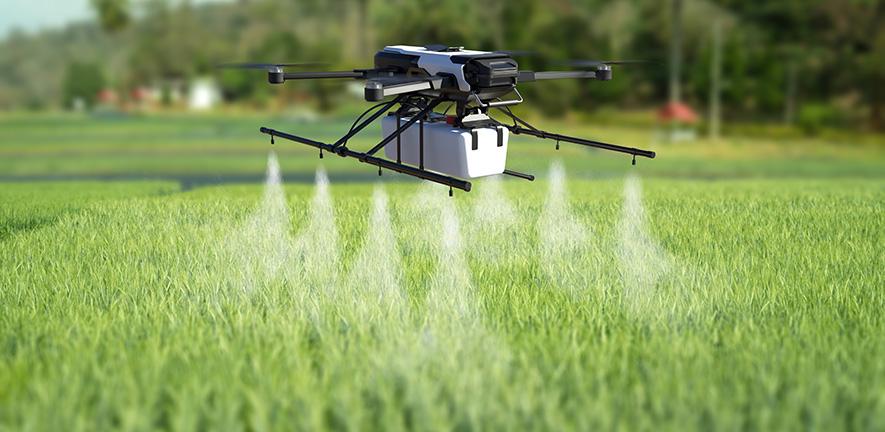Agriculture has been a fundamental part of human civilization for thousands of years, but it’s far from static. The age-old industry is rapidly evolving, thanks to the integration of modern technology. Among these technological innovations, artificial intelligence (AI) stands out as a transformative force in the world of farming. AI is not only changing the way we produce food but also contributing to a more sustainable, efficient, and productive agricultural future.
The Farming Challenge
Before delving into the impact of AI on agriculture, it’s crucial to understand the challenges that the industry faces. A growing global population and the effects of climate change have placed enormous pressure on food production. The need to produce more food with fewer resources has never been more critical.
Traditional farming methods can only take us so far. Inefficient resource allocation, unpredictable weather patterns, and the rising costs of labor all contribute to the complexity of modern agriculture. This is where AI comes into play, offering innovative solutions to age-old problems.
Precision Agriculture
One of the primary ways AI is transforming agriculture is through the implementation of precision agriculture. Precision agriculture relies on real-time data and AI algorithms to optimize various aspects of farming, from planting and irrigation to harvesting and crop monitoring.
-
Data-Driven Decision-Making
AI systems collect data from sensors, drones, and satellites to provide farmers with critical insights. This data can include soil moisture levels, temperature, crop health, and weather forecasts. By analyzing this data, farmers can make informed decisions on when and how to plant, irrigate, and harvest their crops, leading to increased yield and reduced resource wastage.
-
Predictive Analytics
AI can predict disease outbreaks in crops, pest infestations, and other potential issues before they become significant problems. By anticipating these challenges, farmers can take proactive measures to protect their crops, reducing the need for harmful pesticides and other interventions.
-
Automation
Automation is another critical component of precision agriculture. AI-powered machinery can perform tasks such as planting, weeding, and harvesting with unprecedented precision. These machines can work 24/7, helping farmers manage their crops more efficiently and reducing the demand for human labor.
Sustainable Farming
AI is also contributing to sustainability in agriculture. It helps farmers reduce their environmental impact and optimize resource usage. For instance:
-
Water Management
AI-based irrigation systems can significantly reduce water wastage by providing the right amount of water at the right time. This not only conserves a precious resource but also saves on energy and reduces costs for the farmer.
-
Reduced Chemical Usage
AI can help minimize the use of chemical fertilizers and pesticides. By accurately identifying areas in need of treatment and delivering precise doses, farmers can cut down on the environmental impact of farming.
-
Crop Rotation
AI can analyze crop performance over multiple seasons and suggest optimal crop rotations. This reduces soil depletion and the need for excessive chemical inputs while promoting soil health.
The Role of IoT and Big Data
The Internet of Things (IoT) plays a significant role in the success of AI in agriculture. IoT devices, such as soil sensors and weather stations, collect vast amounts of data. AI algorithms then analyze this data in real time to provide valuable insights to farmers. Moreover, big data analytics can be used to identify trends and make predictions on a larger scale, such as regional crop performance and market demand.
Challenges and Considerations
While AI holds great promise for agriculture, it’s not without its challenges. Some of the key considerations include:
Data Privacy and Security
The collection and use of vast amounts of agricultural data raise concerns about privacy and data security. Farmers need to be assured that their data is protected from cyber threats and used for their benefit.
Initial Investment
Adopting AI technologies can be expensive, especially for small-scale farmers. Government support and incentives may be necessary to help make AI-driven solutions accessible to all.
Technical Skills
Farmers need to acquire the technical skills to use AI tools effectively. Training and education programs can help bridge this gap.
The Future of AI in Agriculture
The future of AI in agriculture is incredibly promising. As technology continues to advance, we can expect even more innovative solutions to the challenges of food production. Here are some possibilities:
-
Autonomous Farming
Fully autonomous farms, where AI-driven machinery handles all aspects of crop management, may become a reality. This could lead to increased productivity and reduced labor costs.
-
Crop Breeding and Genomics
AI can accelerate crop breeding by analyzing genetic data and identifying desirable traits. This can lead to the development of more resilient and productive crop varieties.
-
Climate Resilience
AI can help farmers adapt to changing weather patterns by providing real-time recommendations for crop adjustments and resource allocation.
-
Supply Chain Optimization
AI can optimize the entire agricultural supply chain, from field to fork. This could lead to reduced food waste and more efficient delivery of produce to consumers.
In conclusion, AI in agriculture is more than a trend; it’s a vital component of the future of farming. With its ability to improve resource management, increase yields, and promote sustainability, AI is cultivating a brighter future for the agricultural industry. As we continue to develop and refine AI technologies, we can expect even more profound transformations in how we produce and distribute the food that sustains our growing global population.

